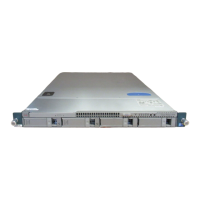CHAPTER
17-1
Cisco Nexus 1000V Troubleshooting Guide, Release 5.2(1)SV3(1.1)
OL-31593-01
17
Quality of Service
This chapter describes how to identify and resolve problems related to Quality of Service (QoS).
This chapter includes the following sections:
• Information About Quality of Service, page 17-1
• QoS Configuration Limits, page 17-1
• QoS Troubleshooting Commands, page 17-2
• Troubleshooting the VEM, page 17-3
• Debugging Policy Configuration Errors, page 17-4
• Debugging Policy Verification Failures, page 17-5
• Debugging Policing Configuration Errors, page 17-6
Information About Quality of Service
QoS lets you classify network traffic so that it can be policed and prioritized in a way that prevents
congestion. Traffic is processed based on how you classify it and the QoS policies that you put in place.
Classification, marking, and policing are the three main features of QoS.
• Traffic Classification—Groups network traffic based on defined criteria.
• Traffic Marking—Modifies traffic attributes such as DSCP, COS, and Precedence by class.
• Policing —Monitors data rates and burst sizes for a particular class of traffic. QoS policing on a
network determines whether network traffic is within a specified profile (contract).
For detailed information about QoS, see the Cisco Nexus 1000V Quality of Service Configuration Guide.
QoS Configuration Limits
Table 17-1 and Table 17-2 list the configuration limits for QoS.

